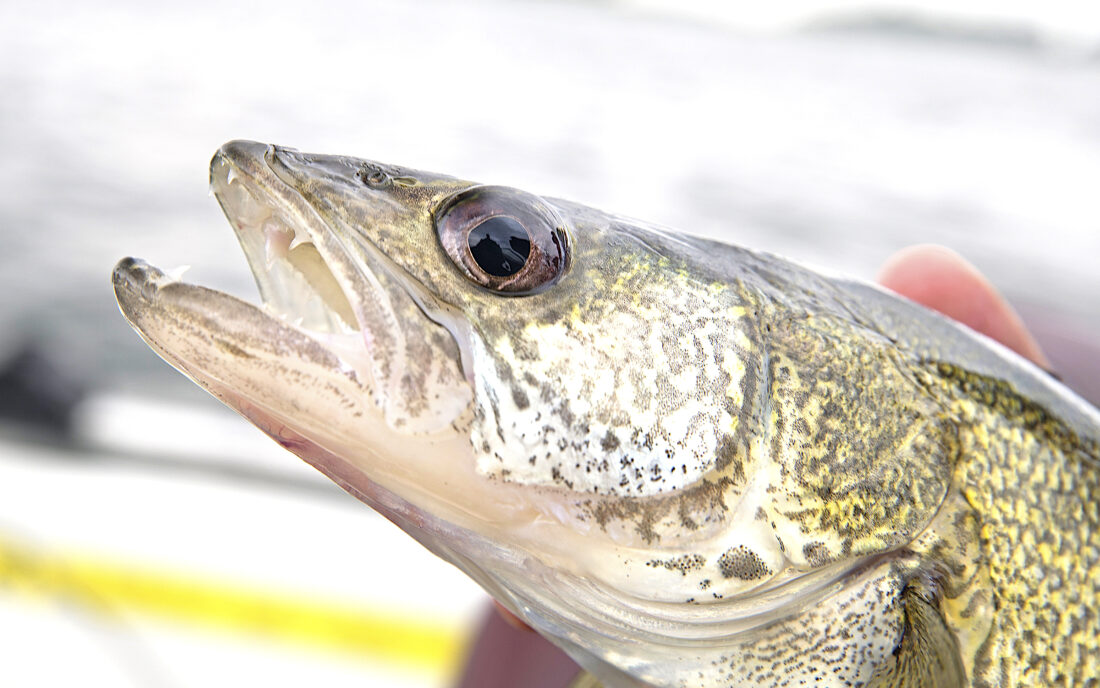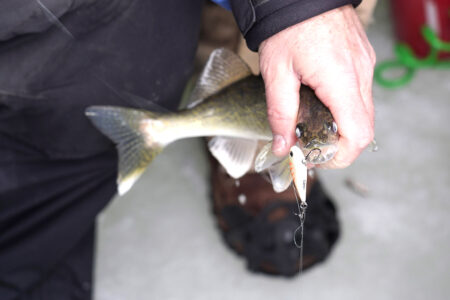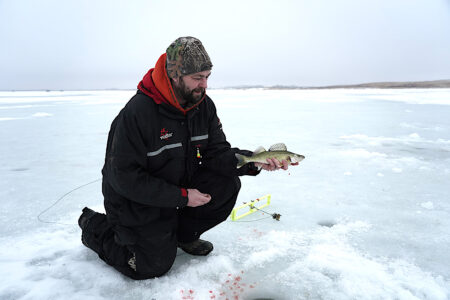North Dakota Outdoors: Biology behind catch-and-release fishing

Submitted Photo The intent of catch-and-release fishing is to enjoy the thrill of landing a fish and then successfully releasing it to live another day and possibly providing an opportunity for the next angler. Photo from NDGF.
No one will argue the intent of catch-and-release fishing. To enjoy the thrill of landing a fish and then successfully releasing it to live another day and possibly providing an opportunity for the next angler.
While the intentions are noble, there’s much more to consider for the full intent of catch-and-release. Especially this time of year.
One consideration is called barotrauma. This is when a fish’s swim bladder balloons as it’s reeled up from the deep. During the dog days of summer when hot air temperatures create warm water and fish are more likely hanging out in deeper water, the science and biology behind successful catch-and-release is much more involved.
Scott Gangl, Game and Fish Department fisheries management section leader, relates a common scenario. “In Lake Sakakawea later in summer, for example, walleye are targeting the cold-water forage base (rainbow smelt), and anglers are catching these fish in 40- to 45-feet of water or deeper.”
The problem is that many fish caught from these depths likely don’t survive after they are released because of extreme changes in pressure on their journey to the net, causing swim bladders to expand. A fish under these circumstances can no longer control its balance in the water column.
“Also, extreme changes in pressure can cause eyeballs to pop out or blood vessels to burst and bleed,” Gangl said. “There are likely internal injuries not visible to anglers.”
Gangl said the message to anglers fishing in these situations is that they should plan to keep what they catch. And if anglers want to simply fish for recreation and have no interest in keeping anything for shore lunch, they should target fish in shallow water. Don’t even tempt yourself by following the fish into deep water.
“We want anglers to understand the effects of catching fish from deep water,” Gangl said. “The key to catch-and-release fishing is that you need to release fish unharmed. This is often not the case from fish caught from those depths and then released.”
Catch-and-release tips
North Dakota Game and Fish Department fisheries biologists encourage catch-and-release fishing when the situation supports the safe return of fish to water. This practice of releasing fish the angler has no intention of using is effective only if fish are handled carefully. And anglers can do plenty to minimize harm to fish:
– Decide to release a fish as soon as it is landed. It is illegal in North Dakota to release a fish once it’s been in a livewell or on a stringer.
– Do not play fish longer than necessary.
– Have a tool – needle-nose pliers or a similar tool – at the ready to remove the hook.
– If the fish is hooked deep, cut the leader or line close to the mouth. Don’t yank the hook from the gullet.
– If possible, leave the fish in the water when removing the hook.
– Use a landing net only when necessary.
– If the fish must be handled, use a wet glove or wet hand.
– Do not hold a fish by the eye sockets. This causes blindness or death.
– Avoid squeezing the fish to protect internal organs.
– Be careful not to damage the gills.
– Return fish to water quickly.
– When releasing an exhausted fish, gently cradle it in an upright position and move slowly back and forth in water until it fully recovers.
– If the fish is bleeding heavily, or if its swim bladder is protruding from the mouth, do not release it.



